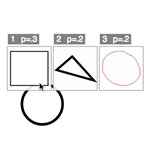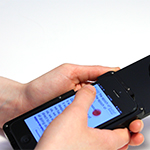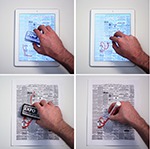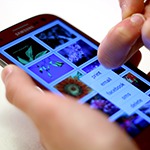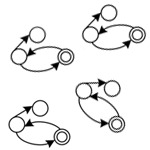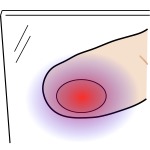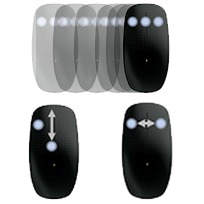Julia Schwarz
I build software that leverages probabilistic modeling, signal processing, and machine learning to improve user interfaces.
I received a BS from University of Washington, and a PhD from Carnegie Mellon University. At Carnegie Mellon I co-founded Qeexo, where I led the team that developed FingerSense, currently shipping on over 300 million Huawei devices.
In 2015 I moved back home to work on the HoloLens team at Microsoft. At Microsoft, I brought instinctual interactions to HoloLens 2, allowing users to directly interact with holograms using their hands.
For more information, please see my résumé.
You can find me on GitHub, Twitter, StackOverflow, and LinkedIn.
Publications my output as a PhD student
PhD Thesis: A Monte Carlo Approach to Probabilistic User Interfaces
An Architecture for Generating Interactive Feedback in Probabilistic User Interfaces
Air+Touch
Probabilistic Palm Rejection Using Spatiotemporal Touch Features and Iterative Classification
Replacing 'Wave to Engage' on Xbox One by Combining Body Pose, Gaze and Motion to Determine Intention to Interact
TouchTools: Leveraging Familiarity and Skill with Physical Tools to Augment Touch Interaction
Phone as a Pixel: Enabling Ad-Hoc, Large Scale Displays using Mobile Devices
TapSense: Enhancing Finger Interaction on Touch Surfaces
Monte Carlo Methods for Managing Interactive State, Action and Feedback Under Uncertainty
Augmenting Web Pages and Search Results to Support Credibility Assessment
A Robust and Flexible Framework for Handling Inputs with Uncertainty
Cord Input: An Intuitive, High-Accuracy, Multi-Degree-of-Freedom Input Method for Mobile Devices
Reflections of Everyday Activities in Spending Data
Notable Side Projects output from evenings and weekends
Headshot: A Windows Phone Application that Uses Computer Vision to Help You Take Selfies
A Face Detection Library for Windows Phone 7
Window Manipulation Using the Microsoft Touch Mouse
Inhabited Web
My other skills include juggling, skiing , and raft-building.

